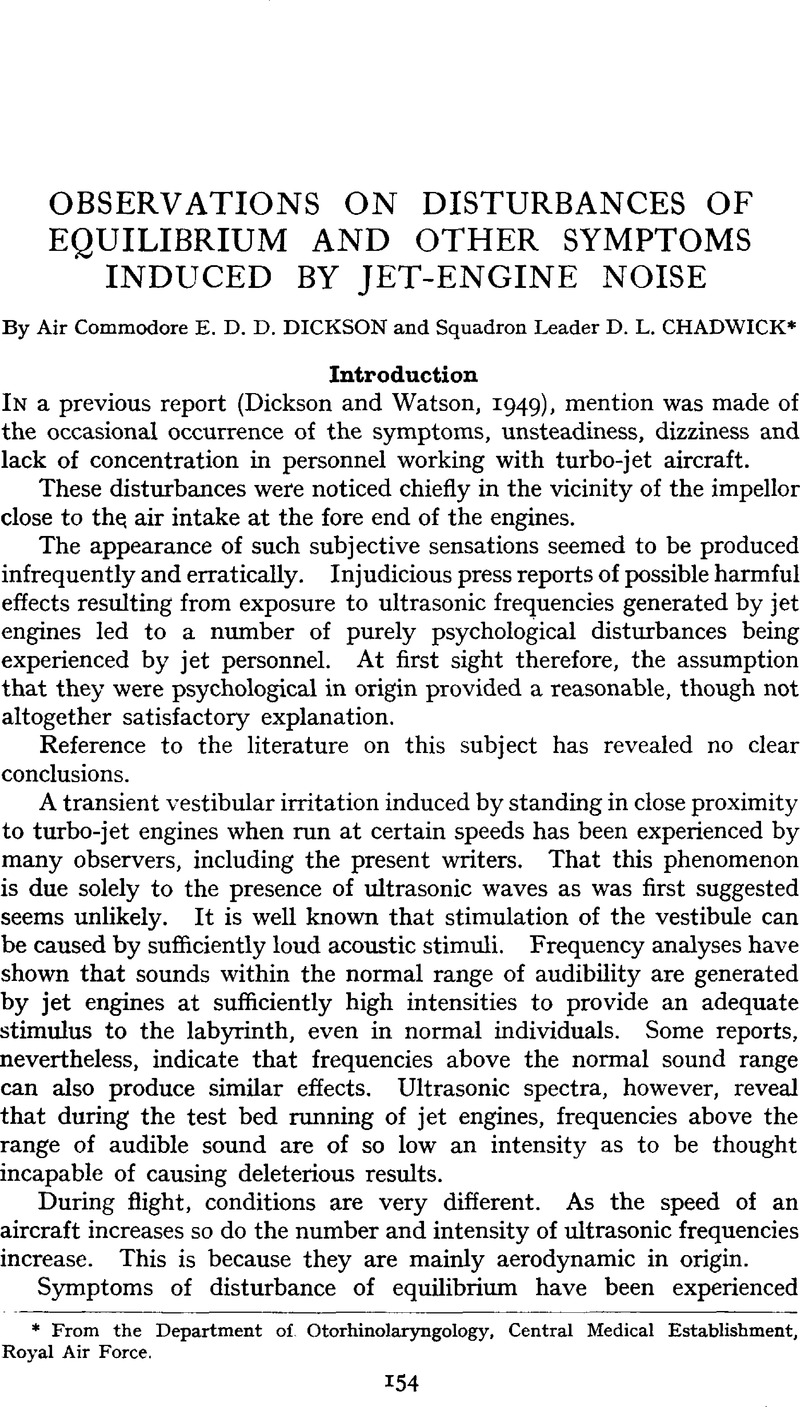Crossref Citations
This article has been cited by the following publications. This list is generated based on data provided by Crossref.
Dickson, E. D. D.
1953.
Some Effects of Intense Sound and Ultrasound on the Ear.
Proceedings of the Royal Society of Medicine,
Vol. 46,
Issue. 3,
p.
139.
Grosse-Brockhoff, F.
1954.
Krankheiten aus Äusseren Physikalischen Ursachen Ernährungskrankheiten Vitamine und Vitaminkrankheiten.
p.
1.
Grosse-Brockhoff, F.
1954.
Konstitution Allergische Krankheiten Krankheiten der Knochen, Gelenke und Muskeln Krankheiten Aus Äusseren Physikalischen Ursachen Ernährungskrankheiten Vitamine und Vitaminkrankheiten.
p.
1201.
McCabe, Brian F.
and
Lawrence, Merle
1958.
The Effects of Intense Sound on the Non-Auditory Labyrinth.
Acta Oto-Laryngologica,
Vol. 49,
Issue. 1,
p.
147.
Chadwick, Denis L.
1963.
Acoustic Trauma—Some Investigations Concerning Industrial Noise.
The Journal of Laryngology & Otology,
Vol. 77,
Issue. 6,
p.
467.
Lange, G.
1966.
Das Tullio-Phänomen und eine Möglichkeit s seiner Behandlung.
Archiv für Klinische und Experimentelle Ohren-, Nasen- und Kehlkopfheilkunde,
Vol. 187,
Issue. 2,
p.
643.
1968.
References.
Acta Oto-Laryngologica,
Vol. 66,
Issue. sup239,
p.
58.
Anticaglia, Joseph R.
1970.
Physiological Effects of Noise.
p.
143.
1970.
The Effects of Noise on Man.
p.
591.
Lipscomb, David M.
1972.
Indicators of Environmental Quality.
p.
211.
Lipscomb, David M.
1972.
Indicators of Environmental Quality.
p.
211.
Acton, W.I.
1974.
The effects of industrial airborne ultrasound on humans.
Ultrasonics,
Vol. 12,
Issue. 3,
p.
124.
Stephens, S. D. G.
and
Ballam, H. M.
1974.
The sono-ocular test.
The Journal of Laryngology & Otology,
Vol. 88,
Issue. 11,
p.
1049.
McLean, E. K.
and
Tarnopolsky, A.
1977.
Noise, discomfort and mental health:A review of the socio-medical implications of disturbance by noise.
Psychological Medicine,
Vol. 7,
Issue. 1,
p.
19.
Man, A.
Segal, S.
and
Naggan, L.
1980.
Vestibular involvement in acoustic trauma (An electronystagmographic study).
The Journal of Laryngology & Otology,
Vol. 94,
Issue. 12,
p.
1395.
Pyykkö, I.
Mnsson, M.
Matsuoka, I.
Ito, S.
and
Hinoki, M.
1982.
Effects of pure-tone sound, impulse noise, and vibration on visual orientation.
American Journal of Otolaryngology,
Vol. 3,
Issue. 2,
p.
104.
Oosterveld, W. J.
Polman, A. R.
and
Schoonheyt, J.
1982.
Vestibular Implications of Noise-Induced Hearing Loss.
British Journal of Audiology,
Vol. 16,
Issue. 4,
p.
227.
Acton, Ian
1982.
Current Approaches to Occupational Health.
p.
169.
Manninen, Olavi
and
Ekblom, Ari
1984.
Single and joint actions of noise and sinusoidal whole body vibration on TTS2 values and low frequency upright posture sway in men.
International Archives of Occupational and Environmental Health,
Vol. 54,
Issue. 1,
p.
1.
Pyykk�, I.
and
Starck, J.
1985.
Combined effects of noise, vibration and visual field stimulation on electrical brain activity and optomotor responses.
International Archives of Occupational and Environmental Health,
Vol. 56,
Issue. 2,
p.
147.



